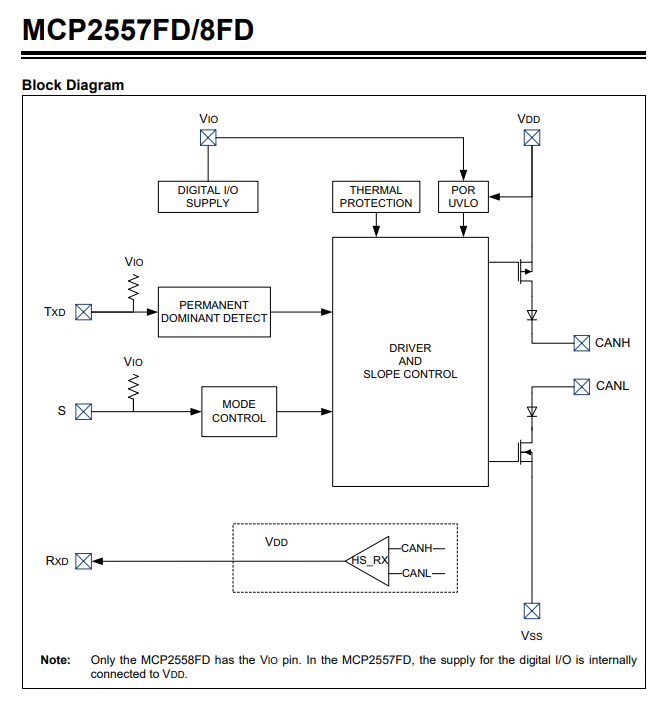VDD is the 5V supply voltage of the IC.
MCP2558FD specific:
VIO is the power supply of the digital interface, which includes TXD, RXD and S.
If you want to connect the CAN transceiver to a MCU with a lower voltage rating than 5 V (eg 1.8 V, 3.3 V), you'll either need to level-shift the digital interface, or (more conveniently) use a CAN transceiver with an integrated separate power supply for the digital interface.
But I don't understand the physical difference on the CAN bus between single-supply and dual-supply.
There is no difference on the CAN bus interface, since the CAN interface is powered by VDD (5 V) in both cases.
What are the benefits and the disadvantages of both configurations?
If you're interfacing this IC to a 5 V MCU then you don't need the MCP2558FD variant. MCP2557FD is probably cheaper and just as good.
If you have to level-shift the digital interface to 1.8 V .. <5 V, I'd recommend the MCP2558FD variant, because you can then do without a separate level shifter.

